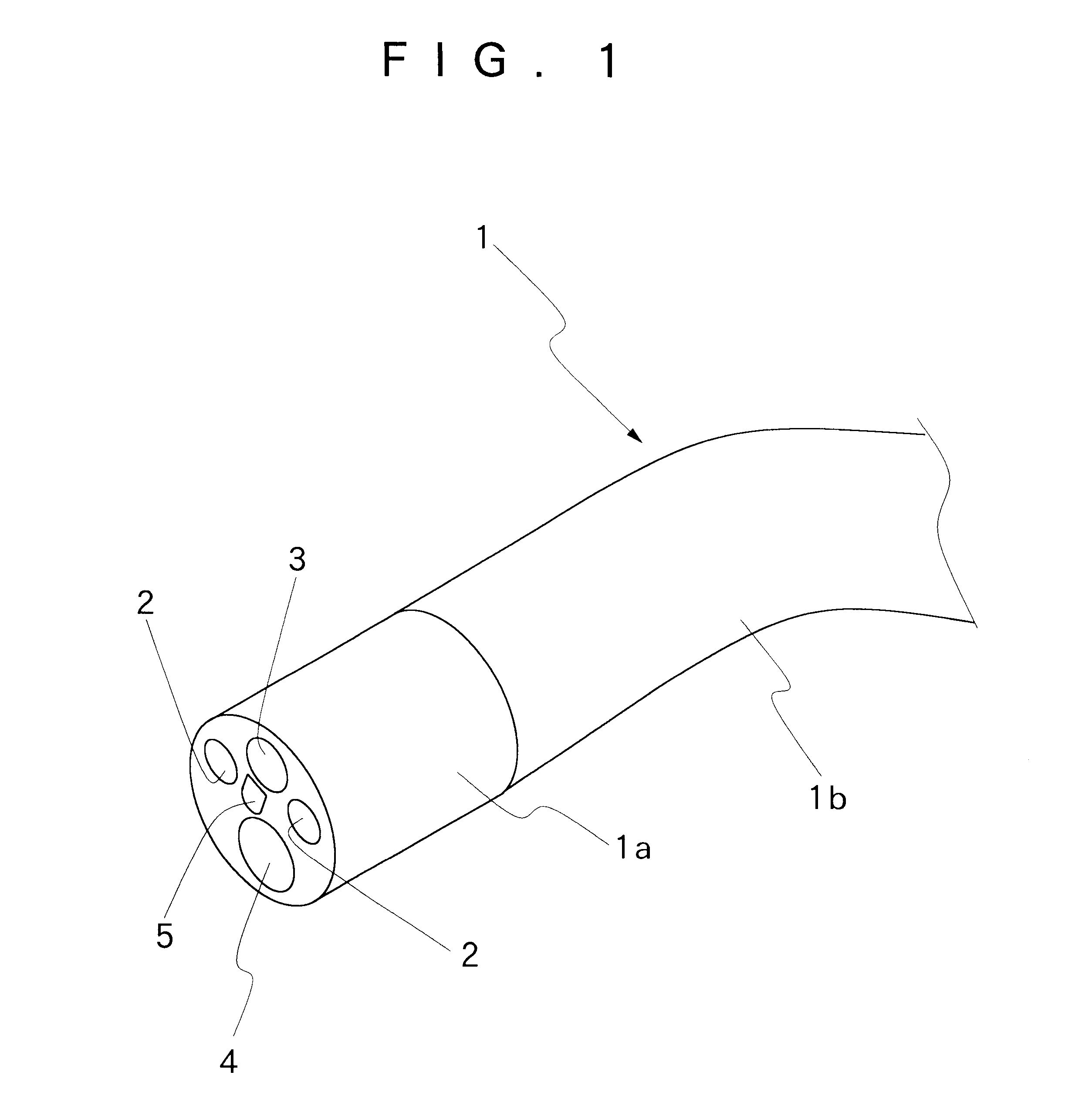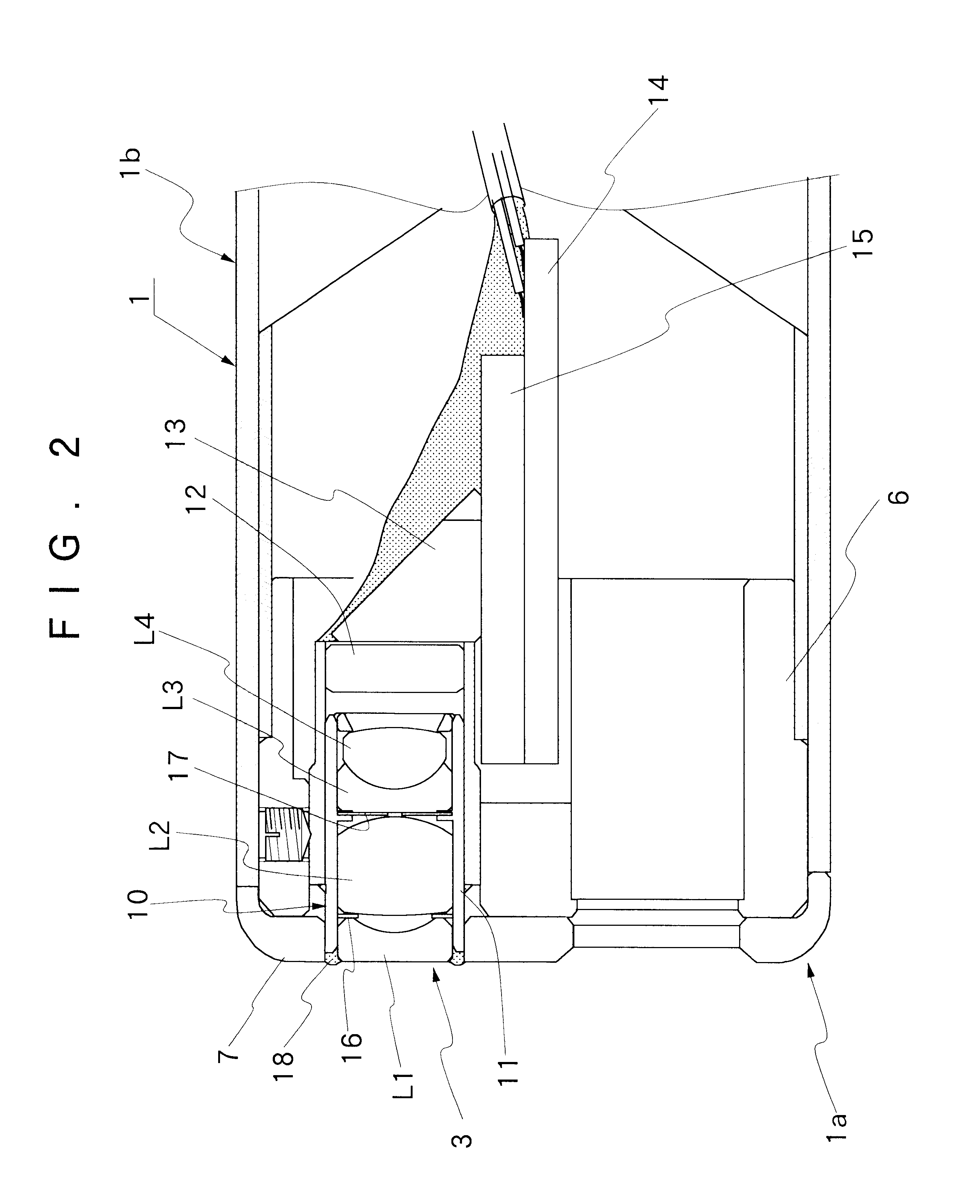Lens assembly for endoscopic lens system
a technology of endoscopic lens and lens assembly, which is applied in the field of lenses, can solve the problems of affecting the quality of endoscopic observation,
- Summary
- Abstract
- Description
- Claims
- Application Information
AI Technical Summary
Benefits of technology
Problems solved by technology
Method used
Image
Examples
Embodiment Construction
Hereafter, the present invention is described more particularly by way of its preferred embodiments with reference to the accompanying drawings. Firstly, shown schematically in FIG. 1 is a tip end portion of an endoscopic insertion instrument. In this figure, indicated at 1 is an insertion instrument to be introduced into a body cavity. At the fore distal end, the insertion instrument 1 is provided with a rigid tip end section 1ahaving a rigid structure for supporting endoscopic observation and illumination means thereon. Through an angle section 1b of a predetermined axial length, the proximal end of the rigid tip end section 1a is connected to an elongated flexible main body, which is connected to a manipulating head assembly of the endoscope although not shown in the drawings. The angle section 1b is provided for turning the rigid tip end section 1a into a desired direction. Opened in a fore end face of a casing of the rigid tip end section 1a are an illumination window 2 and an ...
PUM
 Login to View More
Login to View More Abstract
Description
Claims
Application Information
 Login to View More
Login to View More - R&D
- Intellectual Property
- Life Sciences
- Materials
- Tech Scout
- Unparalleled Data Quality
- Higher Quality Content
- 60% Fewer Hallucinations
Browse by: Latest US Patents, China's latest patents, Technical Efficacy Thesaurus, Application Domain, Technology Topic, Popular Technical Reports.
© 2025 PatSnap. All rights reserved.Legal|Privacy policy|Modern Slavery Act Transparency Statement|Sitemap|About US| Contact US: help@patsnap.com



